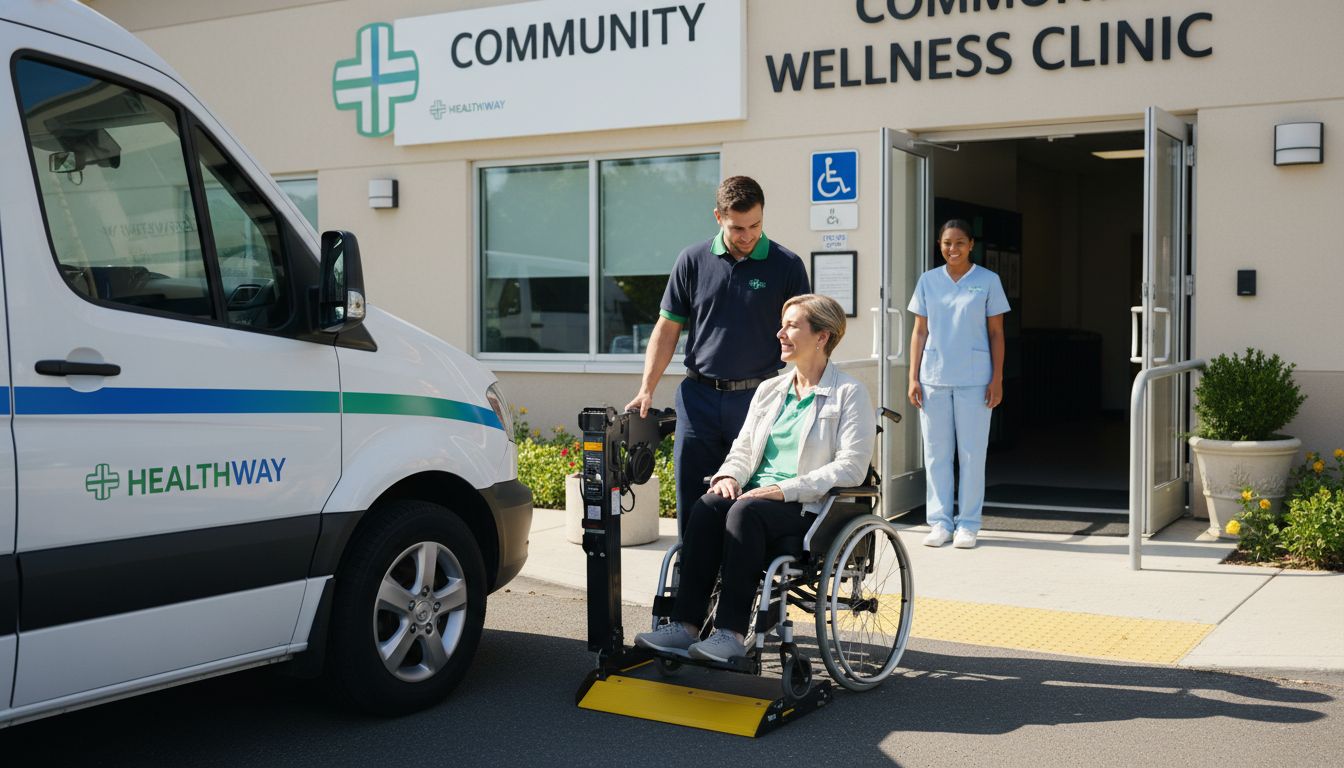Patient Scheduling Optimization for Healthcare Success

Long wait times and missed appointments can cost healthcare providers both revenue and patient trust. In fact, up to 30 percent of medical appointments end in no-shows every year. Efficient patient scheduling is key to running a smooth clinic and giving patients the care they expect. This guide breaks down clear steps to spot workflow gaps, choose the right digital tools, and create a more reliable, patient-friendly scheduling system.
Table of Contents
- Step 1: Assess Current Scheduling Processes And Identify Gaps
- Step 2: Integrate Digital Tools For Automated Scheduling
- Step 3: Configure Real-Time Communication Channels
- Step 4: Implement AI-Driven Scheduling Rules
- Step 5: Monitor Results And Refine Optimization Strategies
Quick Summary
| Key Point | Explanation |
|---|---|
| 1. Assess current scheduling processes | Evaluate existing workflows to identify inefficiencies, such as long wait times and scheduling conflicts. |
| 2. Integrate digital scheduling tools | Choose automated solutions offering features like real-time booking and patient reminders to enhance efficiency. |
| 3. Establish real-time communication channels | Implement multiple communication methods to keep patients informed and facilitate consistent interaction with healthcare teams. |
| 4. Utilize AI for scheduling optimization | Leverage AI-driven rules to create intelligent, adaptive scheduling systems that respond to patient needs in real time. |
| 5. Monitor and refine strategies continuously | Track key performance metrics to ensure ongoing improvements in the scheduling system’s efficiency and effectiveness. |
Step 1: Assess current scheduling processes and identify gaps
Identifying gaps in your patient scheduling workflow is crucial for improving overall healthcare operational efficiency. This step will help you systematically evaluate your current processes and pinpoint areas needing improvement.
According to research from BMC Nursing, understanding existing scheduling practices is fundamental to developing more effective healthcare workflows. Begin by mapping out your current scheduling process step by step. Document each interaction point from patient initial contact through appointment confirmation. Look for these key indicators of potential inefficiencies:
- Excessive manual data entry
- Long patient wait times
- Frequent scheduling conflicts
- High no-show rates
- Inconsistent communication channels
Utilize data from your existing scheduling system to conduct a comprehensive analysis. National Academies Press recommends examining metrics like average scheduling time, appointment completion rates, and staff scheduling complexity. Create a detailed spreadsheet tracking these performance indicators to help visualize potential bottlenecks.

Pro Tip: Involve frontline staff in your assessment. They often have the most nuanced understanding of scheduling challenges and can provide invaluable insights into workflow improvements.
Once you have mapped and analyzed your current processes, you will be prepared to develop targeted strategies for scheduling optimization. The next step involves identifying specific technological or procedural interventions that can streamline your patient scheduling system.
Step 2: Integrate digital tools for automated scheduling
As healthcare organizations seek to optimize patient scheduling, integrating digital tools becomes a critical strategy for enhancing operational efficiency. This step will guide you through selecting and implementing automated scheduling solutions that can transform your healthcare workflow.
National Academies Press highlights the significant potential of digital scheduling tools to streamline patient access and reduce administrative burden. When evaluating potential solutions, consider these key features:
- Real time appointment booking
- Automatic patient reminders
- Seamless integration with existing electronic health record systems
- Patient self scheduling capabilities
- Robust reporting and analytics
To successfully integrate digital scheduling tools, start by assessing your current technological infrastructure. Look for solutions that offer comprehensive scheduling software for healthcare providers which can easily connect with your existing systems. Prioritize platforms that offer intuitive user interfaces for both staff and patients.
Pro Tip: Select a solution with strong data security features to ensure patient information remains confidential and compliant with healthcare regulations.
Implementing automated scheduling is not just about technology implementation but about creating a smoother patient experience. The next step will involve training your staff and gradually transitioning to the new digital scheduling system.
Step 3: Configure real-time communication channels
Configuring effective real-time communication channels is essential for transforming patient scheduling and enhancing overall healthcare coordination. This step will help you establish seamless communication pathways that keep patients informed and healthcare teams connected.
National Academies Press emphasizes the critical role of robust communication channels in modern healthcare scheduling. When designing your communication infrastructure, focus on implementing multiple touchpoints that support immediate and responsive interactions:
- Automated SMS appointment reminders
- Secure patient messaging platforms
- Two way email communication systems
- Mobile app notifications
- Integrated voice response systems
Select communication tools that offer end to end encryption and comply with healthcare privacy regulations. Essential tips for online scheduling in healthcare recommend choosing platforms that integrate smoothly with your existing electronic health record systems.
Pro Tip: Implement a multichannel communication strategy that allows patients to choose their preferred communication method while maintaining consistent and reliable information delivery.
By establishing these dynamic communication channels, you create a more responsive and patient centric scheduling environment. The next phase will involve testing and refining these communication protocols to ensure maximum effectiveness and patient satisfaction.
Step 4: Implement AI-driven scheduling rules
Implementing AI-driven scheduling rules represents a transformative approach to healthcare logistics, enabling more intelligent and responsive patient management. This step will guide you through leveraging artificial intelligence to create smarter scheduling systems that adapt and optimize in real time.
ArXiv research demonstrates the potential of advanced algorithms in healthcare workforce scheduling, highlighting how AI can significantly improve operational efficiency. When developing AI-driven scheduling rules, focus on these key implementation strategies:
- Create predictive models for patient arrival patterns
- Develop intelligent prioritization algorithms
- Build adaptive resource allocation mechanisms
- Implement machine learning for continuous system improvement
- Design flexible scheduling frameworks that can adjust to dynamic healthcare environments
When exploring scheduling software for healthcare providers, prioritize solutions that offer robust AI capabilities. The ArXiv study on prediction-based patient scheduling emphasizes the importance of systems that can dynamically adapt to changing patient arrival patterns and resource constraints.
Pro Tip: Start with a pilot program that allows you to test and refine AI scheduling rules in a controlled environment before full scale implementation.
By integrating these AI-driven scheduling rules, you will create a more responsive and efficient healthcare scheduling system. The next phase involves monitoring performance metrics and continuously training your AI models to improve accuracy and effectiveness.
Step 5: Monitor results and refine optimization strategies
Monitoring and continuously improving your patient scheduling system is critical for maintaining long-term operational efficiency. This step focuses on establishing a comprehensive evaluation framework that allows you to track performance and make data driven improvements.
National Academies Press emphasizes the importance of systematic performance tracking in healthcare scheduling. When monitoring your optimization strategies, concentrate on these key performance indicators:

- Patient wait time reduction
- Appointment completion rates
- Staff utilization efficiency
- Patient satisfaction scores
- Overall system responsiveness
Utilize comprehensive scheduling software for healthcare providers that offers robust analytics and reporting capabilities. Implement a quarterly review process where you analyze these metrics and identify areas for potential refinement.
Pro Tip: Create a baseline measurement before implementing new scheduling strategies so you can quantifiably demonstrate improvement over time.
By establishing a continuous improvement cycle, you transform your scheduling system from a static process to a dynamic adaptive mechanism. The final stage involves developing an ongoing optimization roadmap that ensures your healthcare scheduling remains cutting edge and responsive to emerging needs.
Elevate Your Patient Scheduling with VectorCare’s Digital Platform
The article highlights critical challenges like excessive manual tasks, scheduling inefficiencies, and the need for AI-driven solutions to optimize patient workflows. If you are striving to reduce wait times, eliminate bottlenecks, and enhance communication across your healthcare operations, these pain points demand a powerful, integrated solution. VectorCare offers exactly that with its comprehensive digital platform designed to automate scheduling, enable real-time updates, and apply intelligent dispatching to improve patient logistics effectively.
Imagine streamlining your entire scheduling process while lowering operational costs and boosting patient satisfaction. Our platform stands out by providing user-friendly no-code workflows and seamless integration with existing systems, empowering your staff and patients with effortless appointment management and communication. Explore how scheduling optimization and AI-driven workflows in VectorCare can transform your healthcare delivery.

Ready to overcome scheduling hurdles and make healthcare coordination smoother than ever? Visit VectorCare now to discover how our solutions bring efficiency and clarity to patient logistics. Take the first step toward smarter scheduling and improved outcomes today.
Frequently Asked Questions
How can I identify gaps in my current patient scheduling process?
To identify gaps in your scheduling process, map out each step from patient contact to appointment confirmation. Look for indicators like long wait times or high no-show rates, and document these to pinpoint areas for improvement.
What features should I look for in automated scheduling tools for healthcare?
When choosing automated scheduling tools, prioritize features like real-time booking, automatic reminders, and integration with existing electronic health records. Ensure the solution also offers patient self-scheduling capabilities to streamline the process.
How can I establish effective communication channels for patient scheduling?
To create effective communication channels, implement multiple methods like SMS reminders, secure messaging platforms, and email systems. Choose tools that allow patients to select their preferred communication method for better engagement and consistency.
What are AI-driven scheduling rules and how can they benefit my practice?
AI-driven scheduling rules use algorithms to improve patient management by predicting arrival patterns and optimizing resource allocation. Start by implementing a pilot program to assess their effectiveness in optimizing scheduling processes and reducing wait times.
How can I monitor the effectiveness of my new scheduling strategies?
To monitor effectiveness, establish key performance indicators such as appointment completion rates and patient satisfaction scores. Implement a quarterly review process to analyze these metrics and adjust your strategies for continuous improvement.
What steps can I take to ensure ongoing optimization of my scheduling system?
To ensure ongoing optimization, develop a roadmap that includes regular assessments of your scheduling performance and adaptation of new strategies. Set up baseline measurements to track improvements, aiming for quantifiable results within 30–60 days.
Recommended
- 7 Best Healthcare Scheduling Software for Smooth Operations
- Understanding Scheduling Software for Healthcare Providers
- 7 Essential Tips for Online Scheduling in Healthcare
- Understanding Patient Scheduling Best Practices for Providers
- How to Implement AI in Healthcare for Seamless Automation
- 8 Test Scheduling Strategies for Maximum Efficiency



